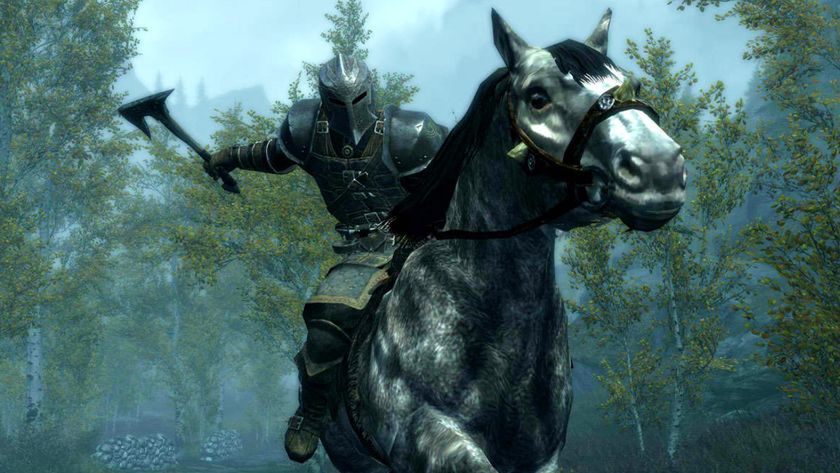It started with N64 and Game Boy, it ended with Wii and DS, and there was a whole lotta Cube in the middle. Come with us as we take a stroll down Memory Card Lane...
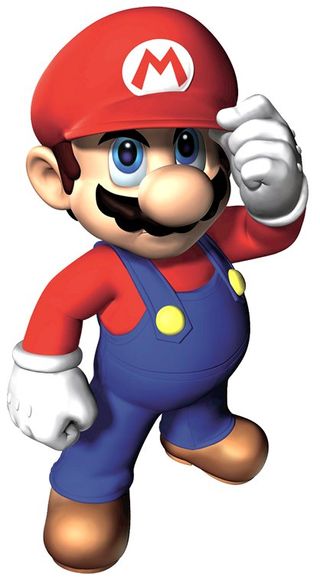
Above: Mario was feeling a little defensive at the decade's start
It was the year 2000, telephones were still largely attached to walls, if you had a 56k modem you were considered a god, and Nintendo were in a bit of a ‘tizzy’. After dominating the console market in the ’80s and much of the ’90s, Nintendo began the new decade in grave danger of being pushed out of the market altogether.
Sony were the current leaders, having widened the videogaming audience with their PlayStation ‘brand’, and hype for the PS2, which was released worldwide later in the year, was off the chain. A beleaguered Sega had started losing faith in the Dreamcast, which became the first sixth-gen console to hit the market upon release in 1999.
And Microsoft’s mysterious Xbox had positioned itself as the ‘high-end console with a crap name’ after an impressive demo at the Game Developers Conference. It all seemed to leave Nintendo’s Project Dolphin without much of a purpose.
Above: This Gamecubepreviewvid had our hearts aflutter
So, naturally, it didn’t really help matters when the Dolphin was pushed back to 2001. Still, everyone perked up a bit when the console, now known as the ‘GameCube’, was finally revealed at SpaceWorld 2000. And not just because it wasn’t called the ‘StarCube’, as was widely speculated by the press in the run-up to the show. The cause of all the commotion was a series of startling tech demos featuring Nintendo classics in all-new 21st Century lush-o-vision.
Sign up to the 12DOVE Newsletter
Weekly digests, tales from the communities you love, and more
Ultimately, little came of many of these demos, but they blew everyone away at the time. Samus made her 3D debut in a short vignette, but Metroid Prime was heavily redesigned between then and the game’s release.
The almost mythical ‘Super Mario 128’ made an appearance, in a funky demo which saw a giganto-Mario split into 128 miniature pipebotherers – but the project went back to the drawing board more times than Madonna, and would later form the foundations for Super Mario Galaxy, bypassing the Cube entirely. And most notoriously, Nintendo showed a clip of a realistic Zelda game, which was later shelved in favour of the cel-shaded Wind Waker. But we’ll let 2001 tell that one. Also delayed into 2001 was the next generation of Game Boy, upon which we optimistically imposed an image of GoldenEye and proclaimed: “Two Super FX chips might just make the Game Boy Advance capable of THIS!” Yeah, scoff all you want, Scoffy McScoffington, but we were bang on with most of our other predictions, which included portable versions of classics such as Super Mario World and Yoshi’s Island, and a Mario Kart that the Game Boy could at last call its own.
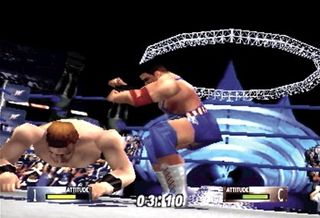
Above: WWF No Mercy, still the best wrestling game ever!
There were some games released in 2000 – just about. But what did come out was largely of a high standard. Tony Hawk made his N64 debut, while WWF No Mercy and Ridge Racer 64 (“Terrifyingly quick”) also made an impression. No prizes for guessing the favourite, though – the de facto follow-up to GoldenEye, Perfect Dark.
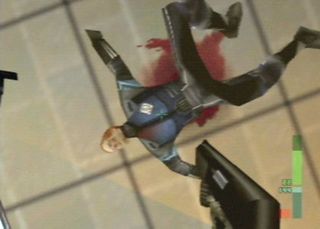
Above: Perfect Dark was awesome... assuming you had an Expansion Pack
The year wasn’t without its disappointments, with the atrociously named Banjo-Tooie falling just short of expectations, while the much-hyped shooter Daikatana, produced by Quake designer John Romero, was one of the flops of the decade. And finally, when your grandchildren ask you about the year 2000, don’t forget to tell them about Blues Brothers 2000. It was quite something…
2000 VERDICT: 8
Some true classics showed their faces, but it’s a shame that the rest of the year was spent twiddling our thumbs, waiting for a console capable of wall textures that didn’t gouge your eyes out.
But above all of the, er, above, 2001 was the year of portable gaming. The much-anticipated Game Boy Advance was finally unleashed on the public this year. Buoyed by a strong launch line-up and by yet another delay to the GameCube (in Europe it would end up missing 2001 altogether), the GBA became one of the big hits of the year, if not the decade. Success was instantaneous – all 650,000 available GBAs found a happy home on launch day in Japan (the most popular colour was Milky Blue, apparently), and to date, 81.5 million of the dinky consoles have been sold worldwide, making it the fifth best selling console of all time.
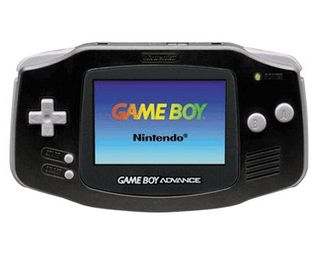
Above: It's like a SNES you can hold
It’s not hard to see why the GBA took off like it did. Prior to its arrival, you could either enjoy a fully Technicolor portable device, or one whose batteries lasted longer than a packet of Raisonettes, but not both. But the GBA was an enigma, like a portable SNES in your hands, but also with a 15-hour battery life. “It couldn’t get any better without running on unseen mystical energies or oxygen,” we said at the time, perhaps not considering that a console that sucks up oxygen would probably be unsuitable for use on long-distance flights.
There was only one downside to the console, although it was a biggy: the lack of a backlight meant that you couldn’t see what was going on half the time. The problem was so bad that by the year’s end, hundreds of DIY backlight installation kits had been sold on eBay. We’ve still got our botched attempt lurking in our understairs cupboard.
Despite the excellence of early GBA titles such as Mario Kart: Super Circuit and Kuru Kuru Kururin, the best portable game (well, games) of the year was released for the humble Game Boy Color. Nintendo bravely franchised their Zelda series out to Capcom, who delivered not one, but two instant classics on the very same day, in Oracle of Ages and Oracle of Seasons.
A great year for handhelds, then, but maybe not for handheld gaming’s most famous menagerie, the Pokemon, who were banned from Saudi Arabia for encouraging gambling, Zionism and ‘possessing the minds’ of children. Yikes. The N64 began to wind down as anticipation for the Cube increased, with Paper Mario the only Western release of note. Envious eyes were cast Japan-wards, though, as Eastern N64 owners had themselves a tremendous time with Animal Forest, a title that would later form the foundations of the Animal Crossing series.
Although a further delay to the GameCube’s launch was disappointing, hype for the scampy purple box of tricks reached fever pitch after an E3 blowout that gifted us our first glimpses of titles such as Super Smash Bros Melee, Pikmin, Eternal Darkness, Donkey Kong Racing and Starfox Adventures: Dinosaur Planet.
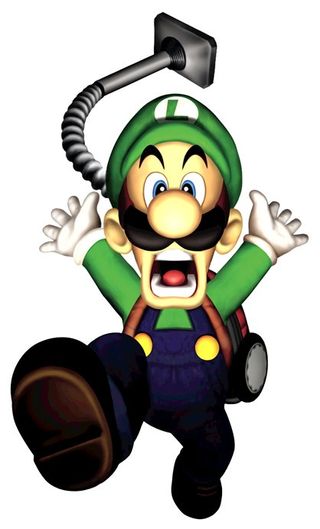
Above: C'mon Luigi, your game wasn't that bad
Far less well received was the debut of Chibi-Link at Spaceworld 2001. Although he’s now as dearly loved as Serious Broody Adult Link, it wasn’t always this way. In fact, the amount of fanboy bile thrown at the 30-second Wind Waker demonstration was almost unprecedented. “I feel slapped in the face and betrayed,” said one online commentator in response to Cel-dagate. “I’m embarrassed to be a Zelda fan. I’m going to walk off a very high cliff. Bye,” said another. Oh, internet. What are you like, eh?
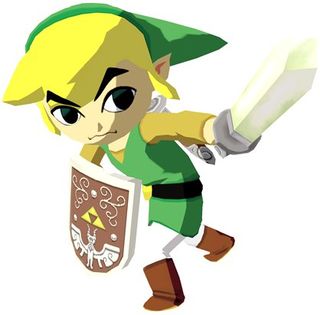
Above: Hard to imagine this cute kid pissing off so many people
Despite the very existence of a Cartoon-Link threatening to rip apart the fabric of space and time, we survived long enough to see the release of the GameCube in Japan and the US, with the main launch title being Luigi’s Mansion. A fun game to be sure, but hardly a replacement for a real Mario game at launch. Though Super Smash Bros. Melee was a big hit, nearly making up for LM, and would eventually be the biggest seller for the system by the end of the Gamecube, while the new series Pikmin prived a fun distraction. What would 2002 hold?
2001 VERDICT: 7
Although it was clearly quite fundamentally flawed, the original Game Boy Advance was an ice-cool distraction from the lack of Cube-osity, even if it was bundled with Mario Bros. 2.


